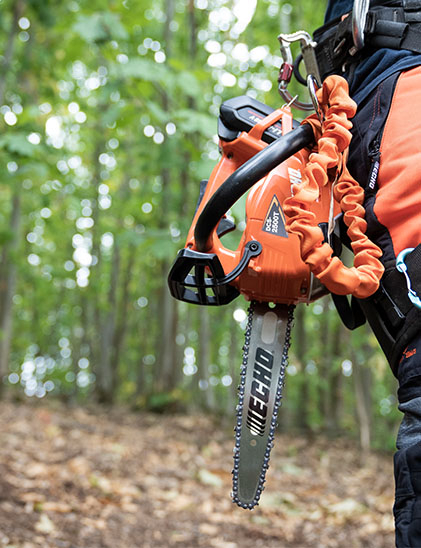Keeping your chainsaw sharp is essential for optimal performance and safety during cutting tasks. In this detailed guide, we will explore the easiest and most effective methods for sharpening a chainsaw, ensuring that you can maintain a razor-sharp cutting edge effortlessly.
1. Selecting the Right Sharpening Tools:
The journey to a sharp chainsaw begins with choosing the right tools. Options include round files, flat files, file guides, and specialized sharpening kits. Understanding the purpose and proper use of each tool is crucial for efficient sharpening.
2. Understanding Chain Tooth Anatomy:
Before diving into the sharpening process, it's essential to comprehend the anatomy of a chainsaw chain. Components such as cutting teeth, depth gauges, and drive links play distinct roles in the chain's function. Recognizing these elements provides a foundation for precise and effective sharpening.
3. Mastering the Filing Technique:
Achieving a consistently sharp cutting edge requires mastering the filing technique. This involves maintaining the correct filing angles, applying even pressure, and ensuring uniform strokes. Understanding the specific filing angles recommended for your chainsaw chain enhances the efficiency of the sharpening process.
4. Utilizing Depth Gauge Tools:
While sharpening the cutting teeth is crucial, overlooking the depth gauges can lead to suboptimal performance. Depth gauge tools help maintain the proper distance between the cutting teeth and the depth gauges, ensuring an even and efficient cutting process.
5. Choosing Between Manual and Electric Sharpeners:
For those seeking a more automated approach, electric chainsaw sharpeners provide convenience and speed. Understanding the features, benefits, and limitations of manual versus electric sharpeners allows users to choose the method that best aligns with their preferences and skill level.
6. Regular Maintenance for Consistent Sharpness:
Consistency is key when it comes to chainsaw sharpening. Implementing a regular maintenance schedule, including routine checks for chain tension, lubrication, and overall saw condition, ensures that your chainsaw remains consistently sharp and ready for any cutting task.
7. Tips for Novice Chainsaw Users:
For beginners, chainsaw sharpening may seem daunting. Practical tips, such as marking the starting point, maintaining a steady hand, and taking breaks to avoid fatigue, ease the learning curve. A step-by-step approach builds confidence and ensures effective results.
8. Troubleshooting and Fine-Tuning:
Understanding common issues that may arise during chainsaw sharpening, such as uneven teeth lengths or improper filing angles, empowers users to troubleshoot and fine-tune their techniques. This knowledge contributes to a smoother sharpening process and optimal cutting performance.
Conclusion:
Sharpening a chainsaw doesn't have to be a complex or time-consuming task. By selecting the right tools, mastering the filing technique, utilizing depth gauge tools, choosing between manual and electric sharpeners, implementing regular maintenance, offering tips for novice users, and troubleshooting common issues, you can easily maintain a sharp chainsaw. This guide equips you with the knowledge and techniques needed to keep your chainsaw in top cutting condition, ensuring efficiency and safety in every use.


More Stories
Inside Dconntek’s Rectangular Connector Series: Built for Precision and Durability
The Impact of Temperature on Oscillator Performance and Stability
Choosing the Right Low-Voltage Three-Phase Motor: Key Specifications & Best Practices